ResolveIncidentInbound Fields
We will utilise the Field & Field Map records to configure the Message Scripts for the ResolveIncidentInbound Message.
Field records can represent the handling of two categories of data: either a data object which carries transaction specific data (e.g. name, time stamp, source id etc.), or a field element on the bonded record (e.g. Short description).
The 'message.header', 'incident.description' and 'incident.short_description' Field records are already be in place because they were also copied when we copied the Message. We will now configure Field records for the remaining field elements we have chosen to map.
Fields & Field Maps
Depending on your requirements, you will need to create Field records for each of the relevant Incident record field elements you wish to map. As we have chosen to include the state, close_notes & close_code elements in both the Setup script & Response script of the Poll Processor, this Guide will focus on those three only. If you wish, however, you are free to configure other Field records as required (ensuring you also define them in both the Setup Script & Response script of the Poll Processor).
For a full description of the available Field Maps, please see the relevant page in our technical documentation.
The table below lists the Incident record field elements we will map and the relevant Field Maps required to configure each Field record.
state
'PI - Choice'*
close_notes
'PI - String'*
close_code
'PI - Choice'*
*Field map: Values may vary (dependent on your configuration of the copies). Choose the copy Field Maps you created earlier.
Field: incident.state (Message level)
From the ResolveIncidentInbound Message, navigate to Message > Fields.
Your ResolveIncident Message Fields page should look like this:
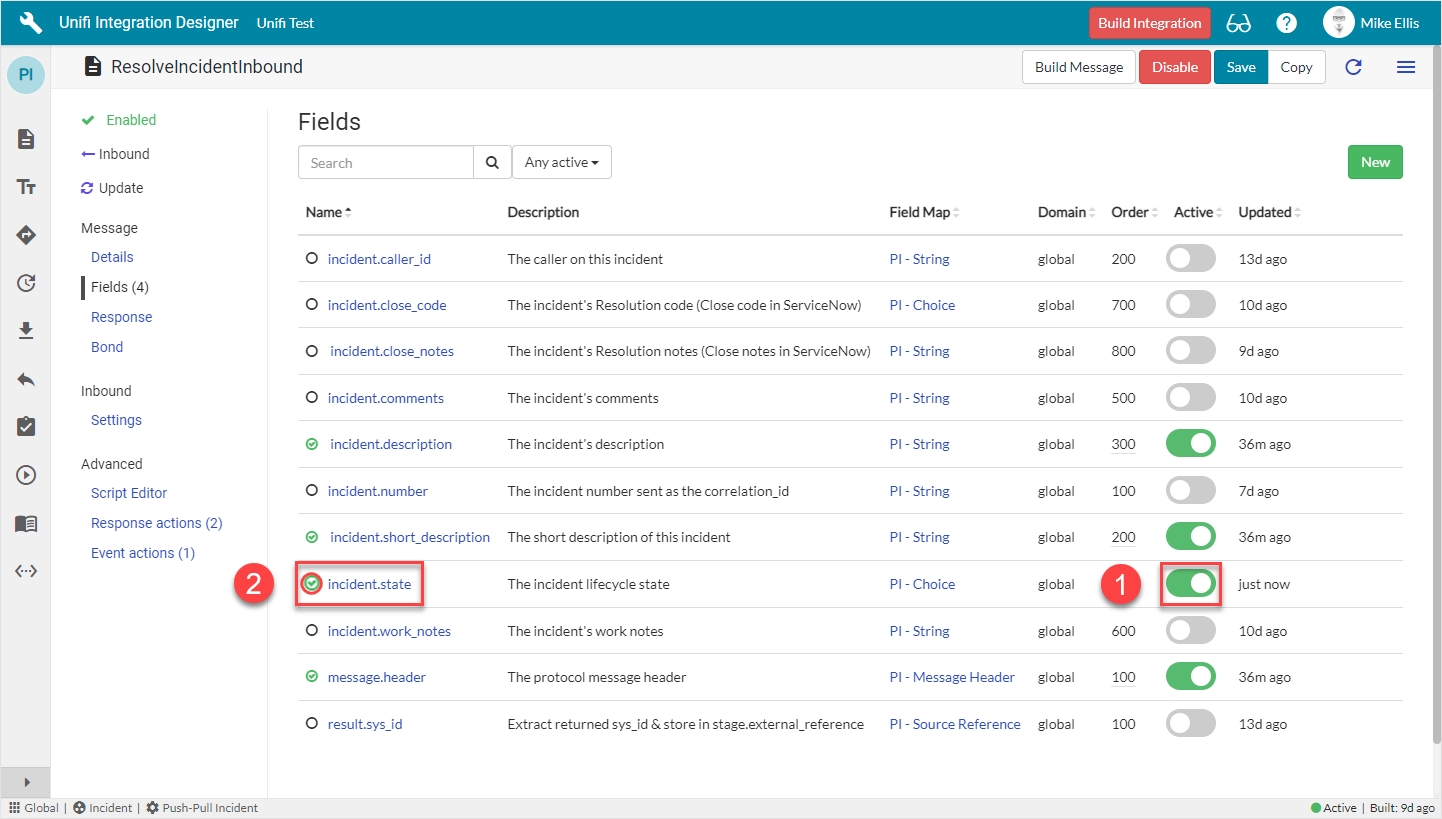
Find the incident.state (Integration level) Field & set Active to true.
The empty circle icon next to the Field name turns green & contains a green ‘check’ (to indicate that Message level configuration exists for this Field) when we set Active to true. (The ‘Build Integration’ button became visible in the banner when we copied the UpdateIncidentInbound Message).
By simply setting the Active flag to true on the Integration level Field record listed on the Message, Unifi has created the Message level counterpart.
Click to open the newly created incident.state (Message level) Field record for further editing.
The incident.state Field record opens to the Details page.
To edit, set Inherit to False.
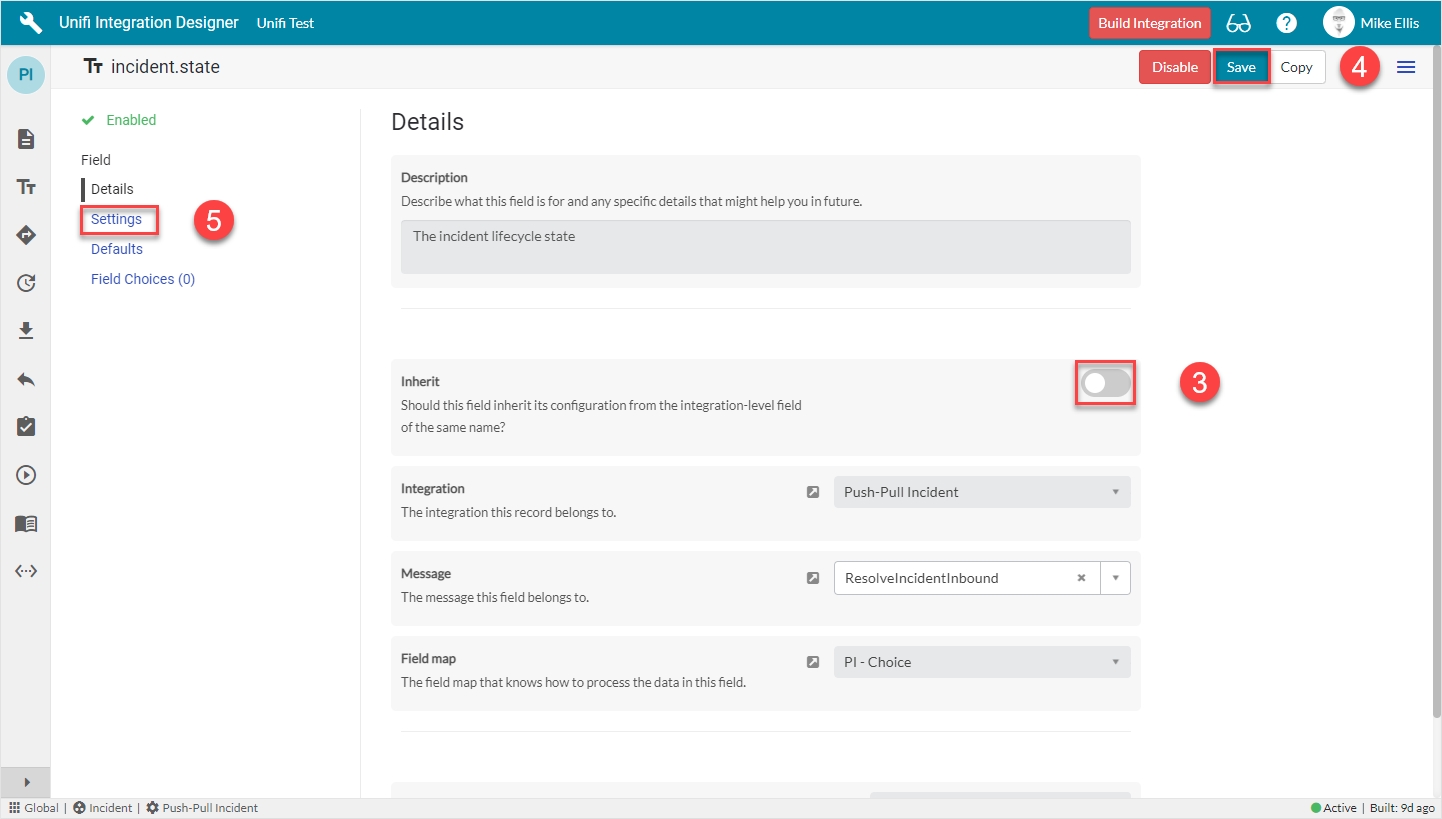
Save the record (the fields now become editable).
Navigate to Field > Settings.
The fields to be changed to configure the incident.state (Message level) Field record are as follows:
Path
Where in the payload the data will be placed.
'detail'
Inbound
Set to true to use for inbound Messages.
<true>
Outbound
Set to true to use for outbound Messages.
<false>
Your incident.state (Message level) Settings form should look like this:
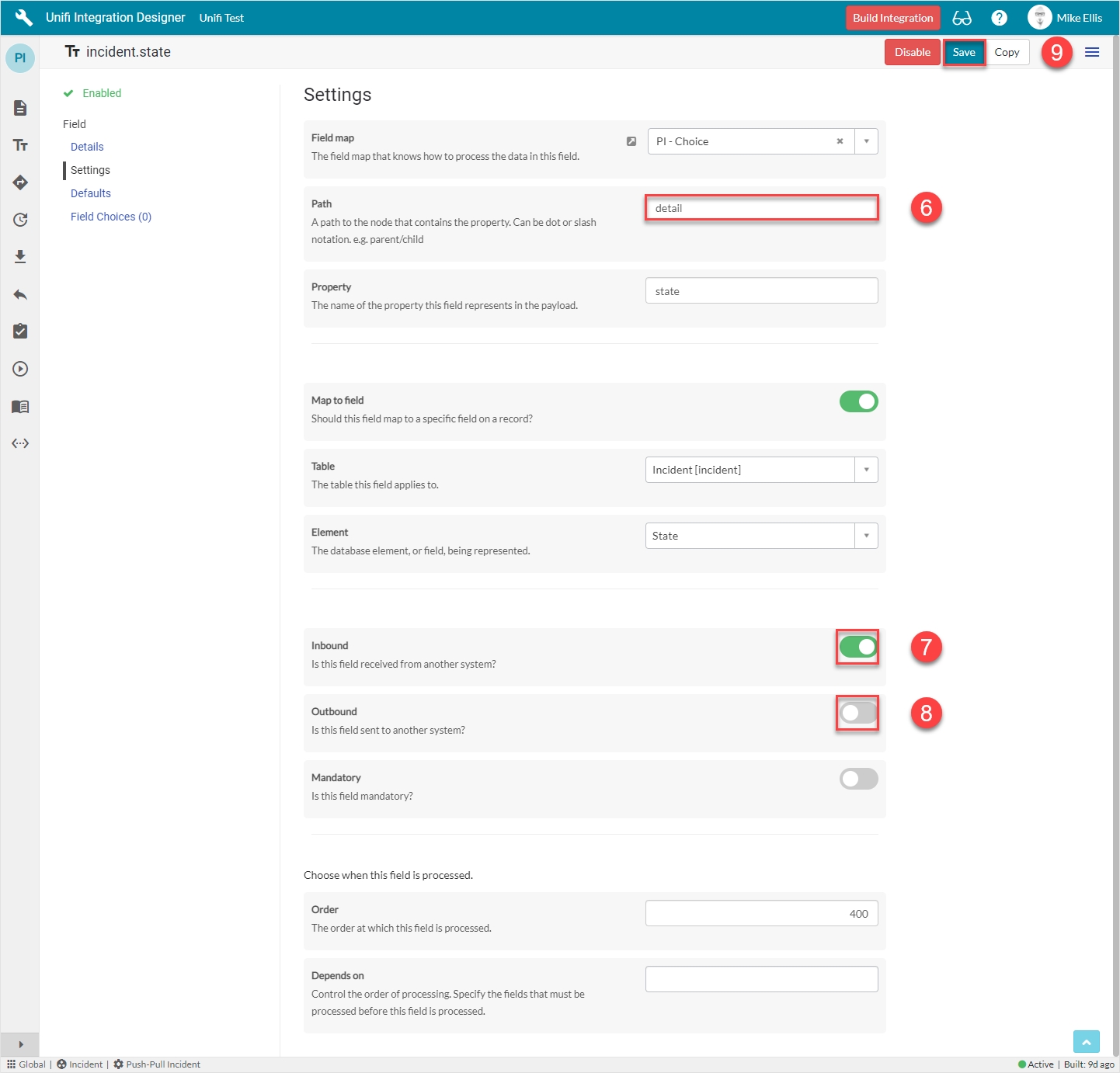
Save the record.
Field: incident.close_notes
To quickly navigate to the ResolveIncidentInbound Message from the Details page of the incident.state Field record...

...click the ‘Preview’ icon to the left of the Message field.
From the ResolveIncidentInbound Message, navigate to Message > Fields.
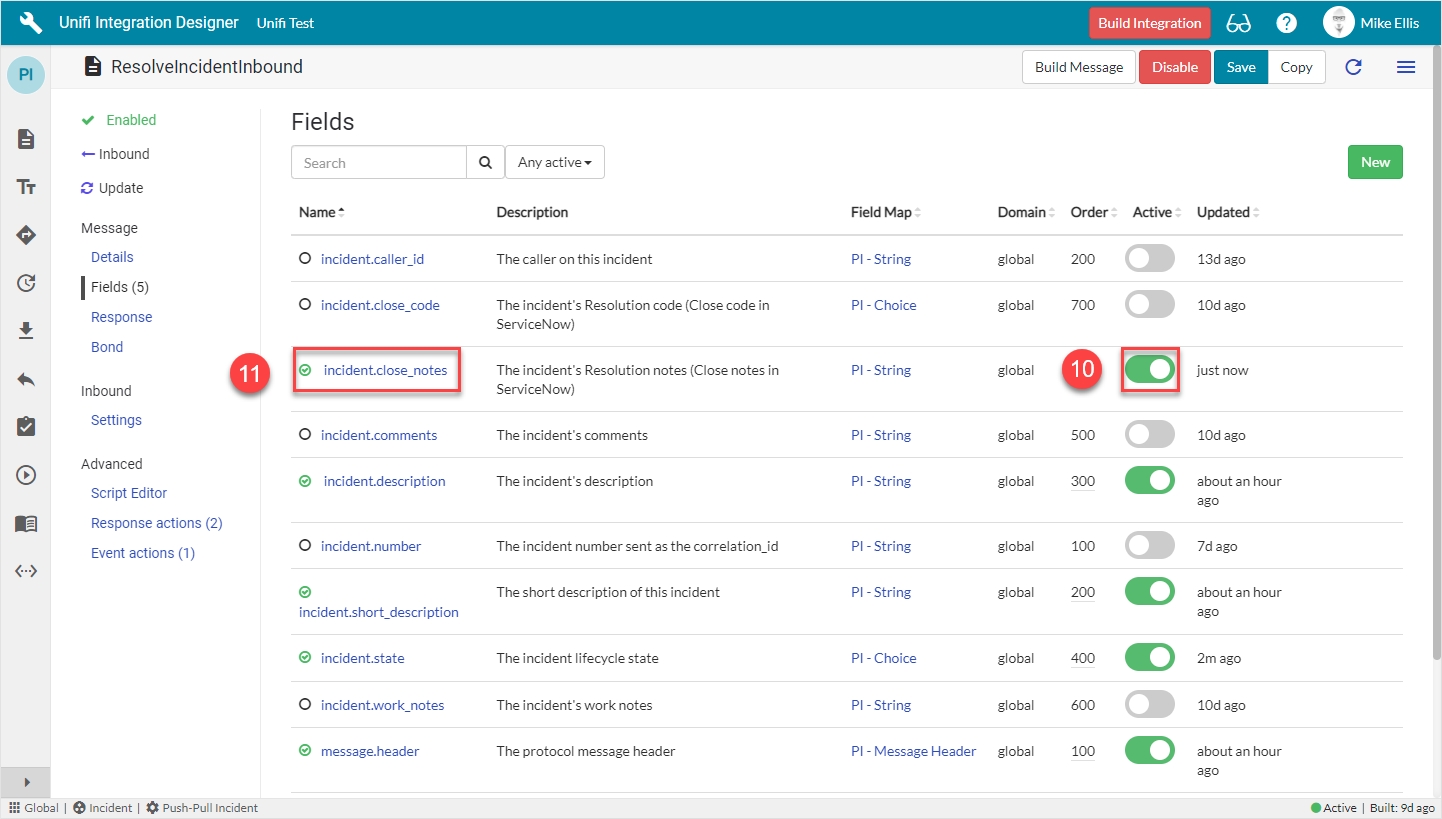
Find the incident.close_notes (Integration level) Field & set Active to true.
Click to open the newly created incident.close_notes (Message level) Field record for further editing.
The incident.close_notes Field record opens to the Details page.
To edit, set Inherit to False.
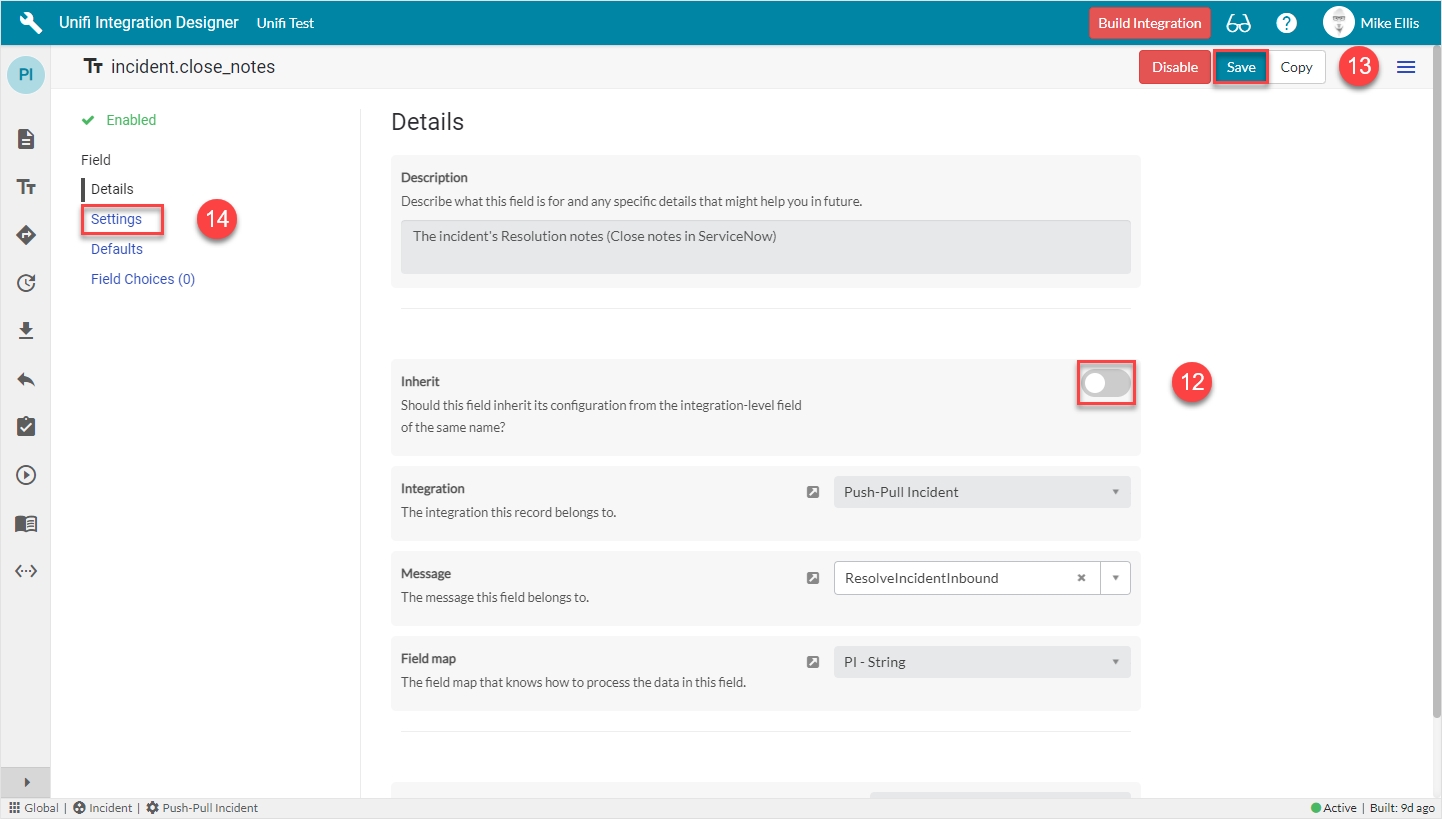
Save the record (the fields now become editable).
Navigate to Field > Settings.
The fields to be changed to configure the incident.close_notes (Message level) Field record are as follows:
Path
Where in the payload the data will be placed.
'detail'
Inbound
Set to true to use for inbound Messages.
<true>
Outbound
Set to true to use for outbound Messages.
<false>
Mandatory*
Set to true to make mandatory.
<true>
*Mandatory should already be set to true.
Your 'incident.close_notes' (Message level) Settings form should look like this:
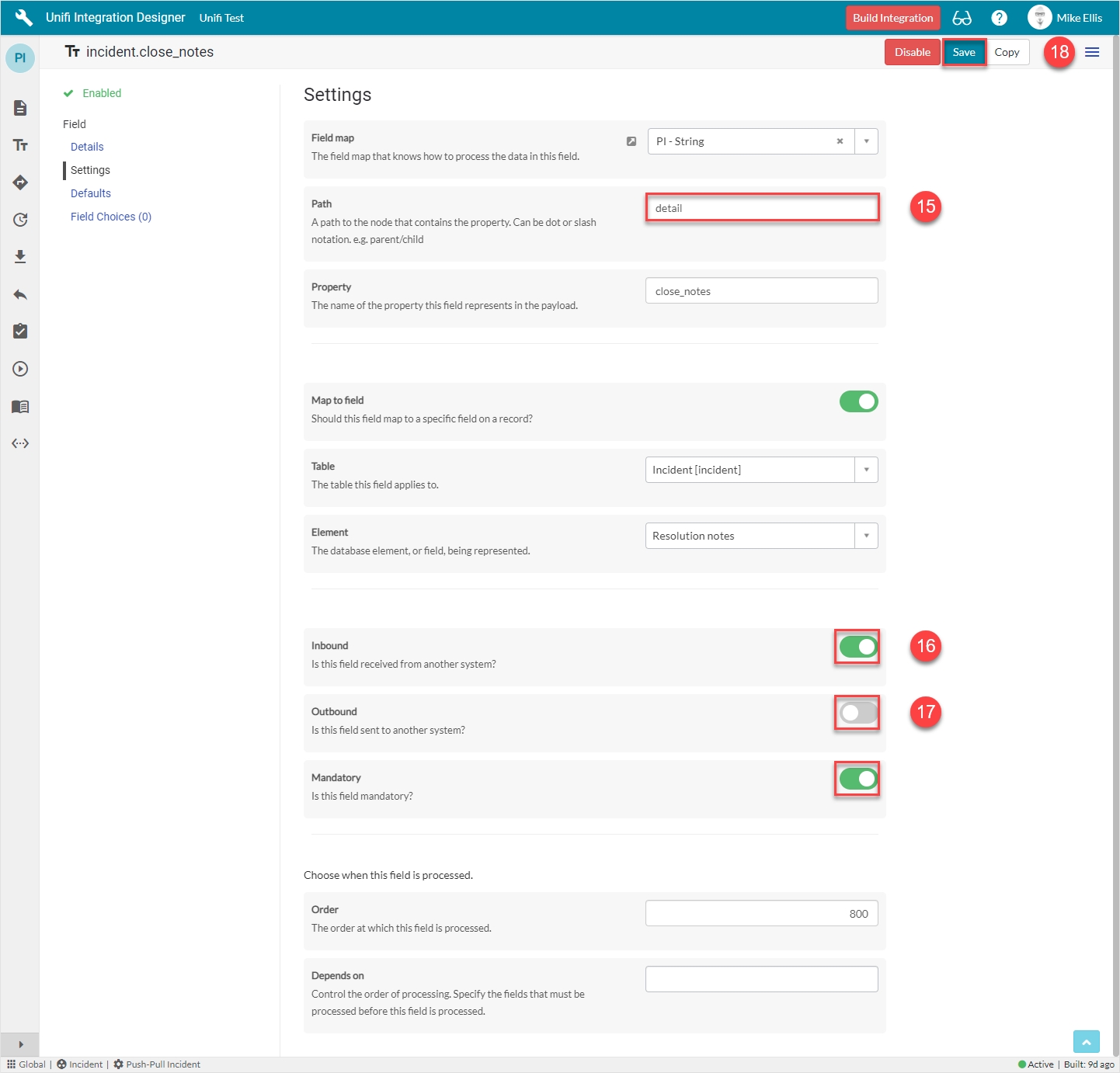
Save the record.
Field: incident.close_code
From the ResolveIncidentInbound Message, navigate to Message > Fields.
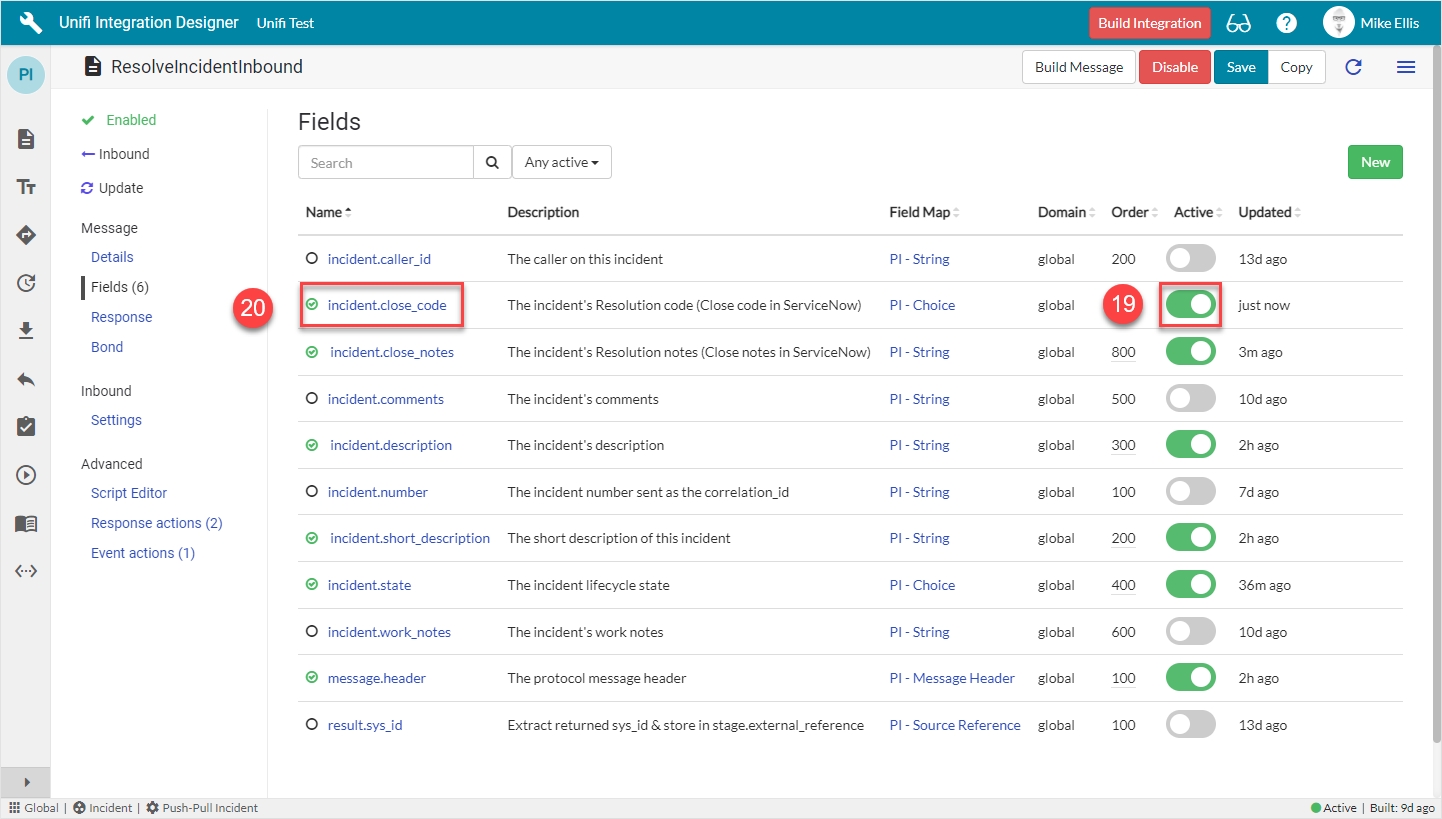
Find the incident.close_code (Integration level) Field & set Active to true.
Click to open the newly created incident.close_code (Message level) Field record for further editing.
The incident.close_code Field record opens to the Details page.
To edit, set Inherit to False.
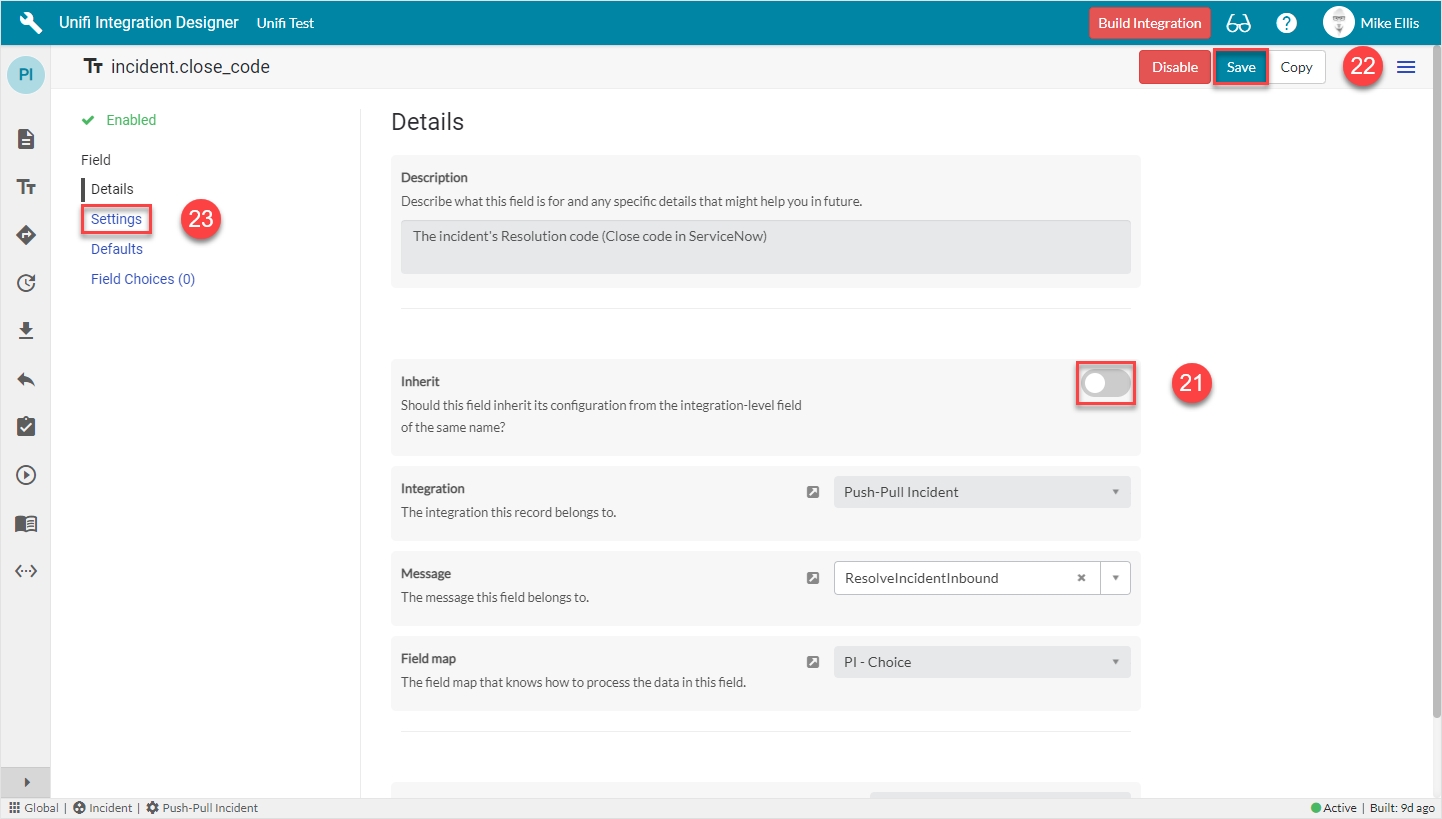
Save the record (the fields now become editable).
Navigate to Field > Settings.
The fields to be changed to configure the incident.close_code (Integration level) Field record are as follows:
Path
Where in the payload the data will be placed.
'detail'
Inbound
Set to true to use for inbound Messages.
<true>
Outbound
Set to true to use for outbound Messages.
<false>
Mandatory*
Set to true to make mandatory.
<true>
*Mandatory should already be set to true.
Your ‘incident.close_code’ (Message level) Field record should look like this:
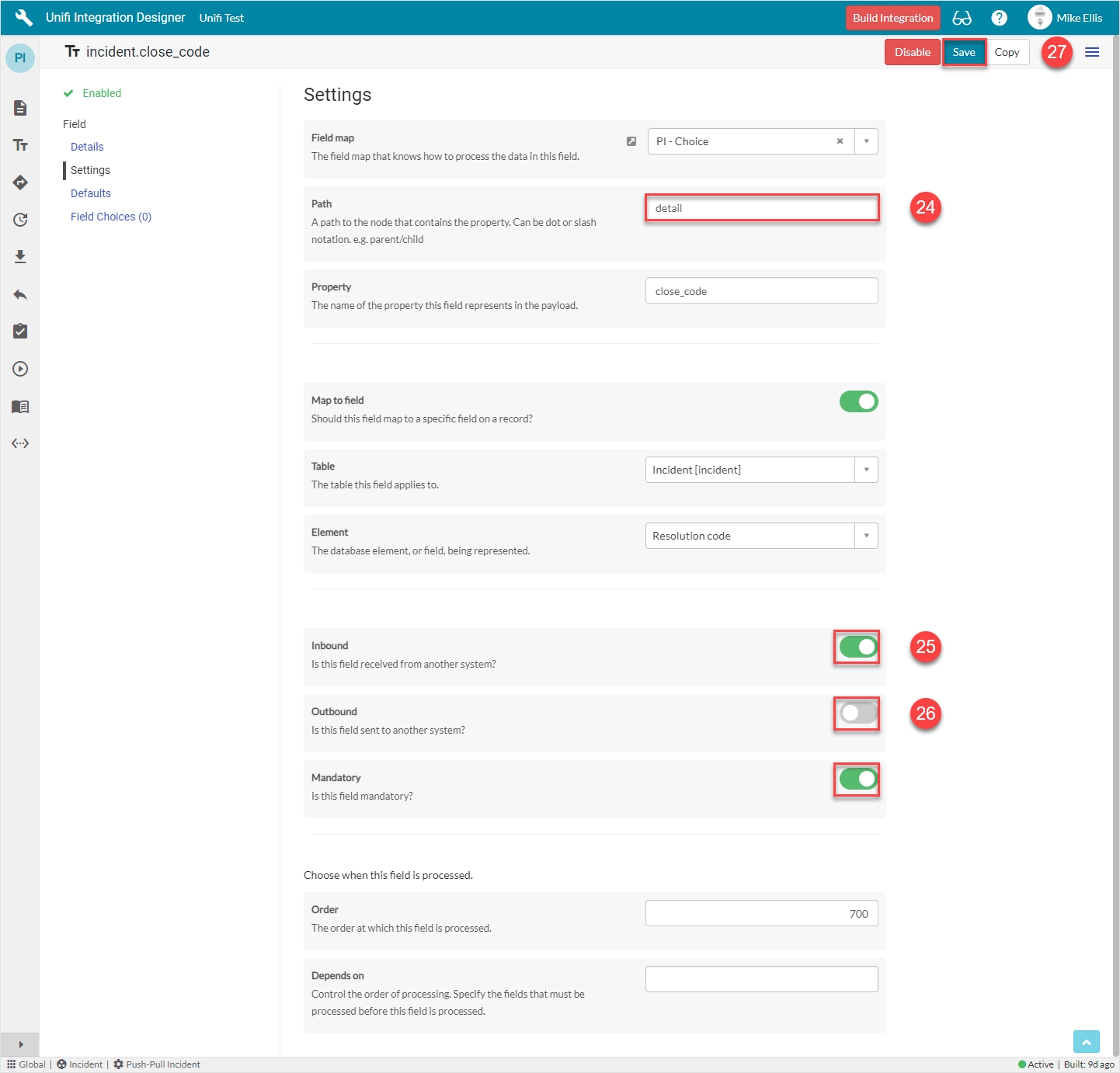
Save the record.
Build
Now that we’ve configured the Field records for the ResolveIncidentInbound message, we are ready to build our message scripts.
From the ResolveIncidentInbound message., navigate to Message > Fields.
The following Field records should now be in place for your ResolveIncidentInbound messsage:
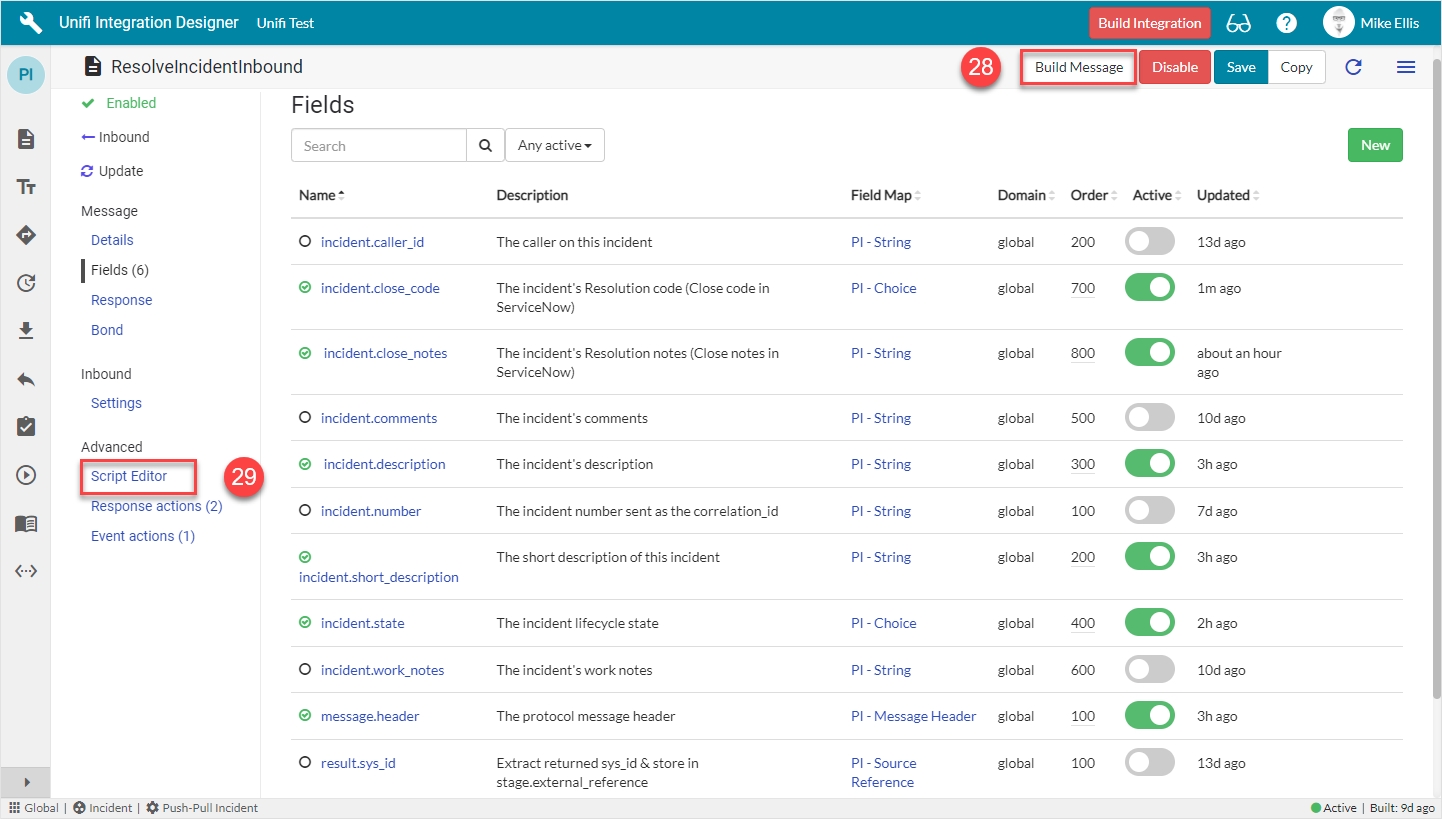
Click on Build Message.
You will see the 'Message build successful' Info Message.

Navigate to Advanced > Script Editor > View > Inbound to view the auto-generated code.
Your Script Editor fields should look like this:
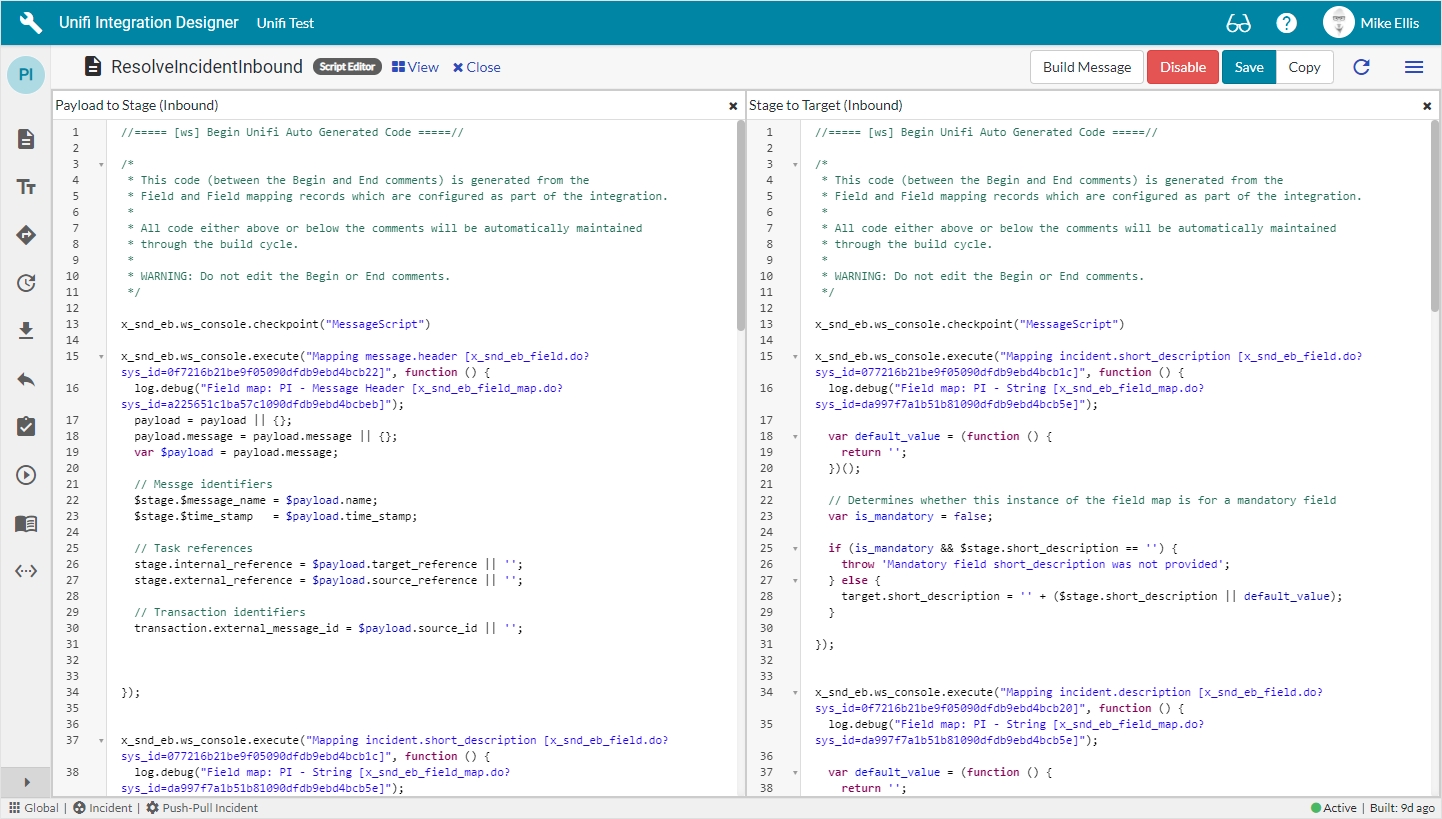
Message Scripts
The Message Scripts reflect the mappings as per this Guide. Your scripts might differ depending on which Fields you chose to map (& defined in the payload). We will look at the Message Scripts in turn.
Payload to Stage:
Your Payload to Stage Message Script should look like this:
Stage to Target:
Your Stage to Target Message Script should look like this:
Because we have already made a few changes to allow for inbound Message & Bond Identification in our earlier 'Incident Update Poller' Guide, we can now move on to Testing.
Was this helpful?
